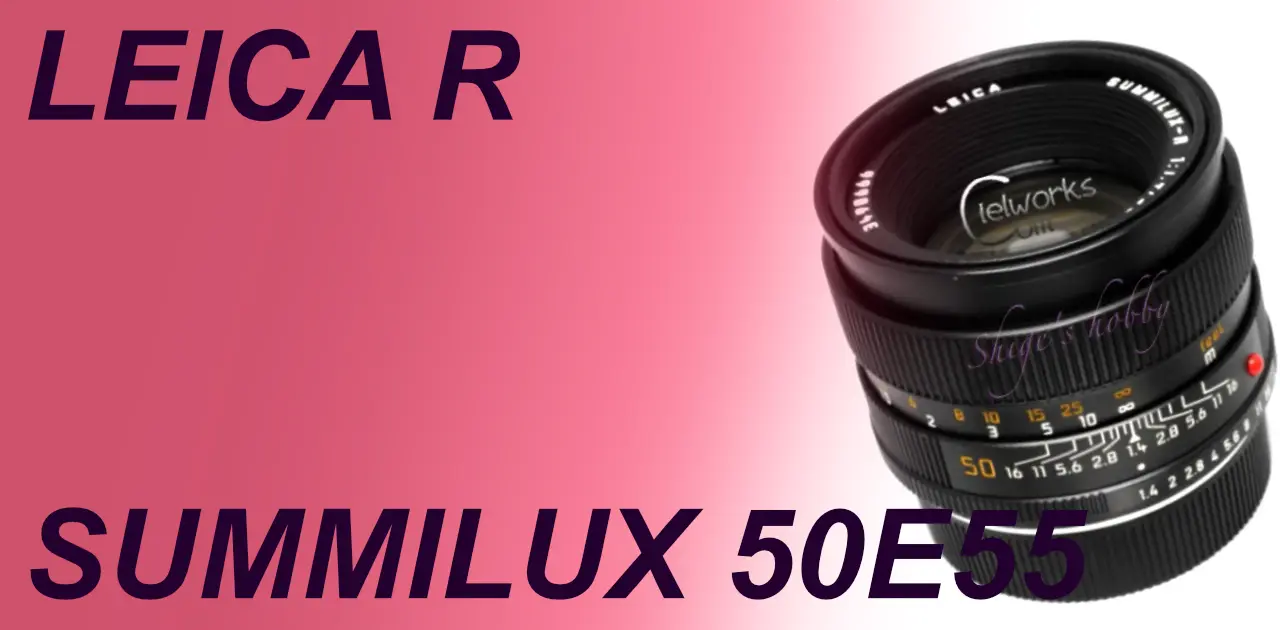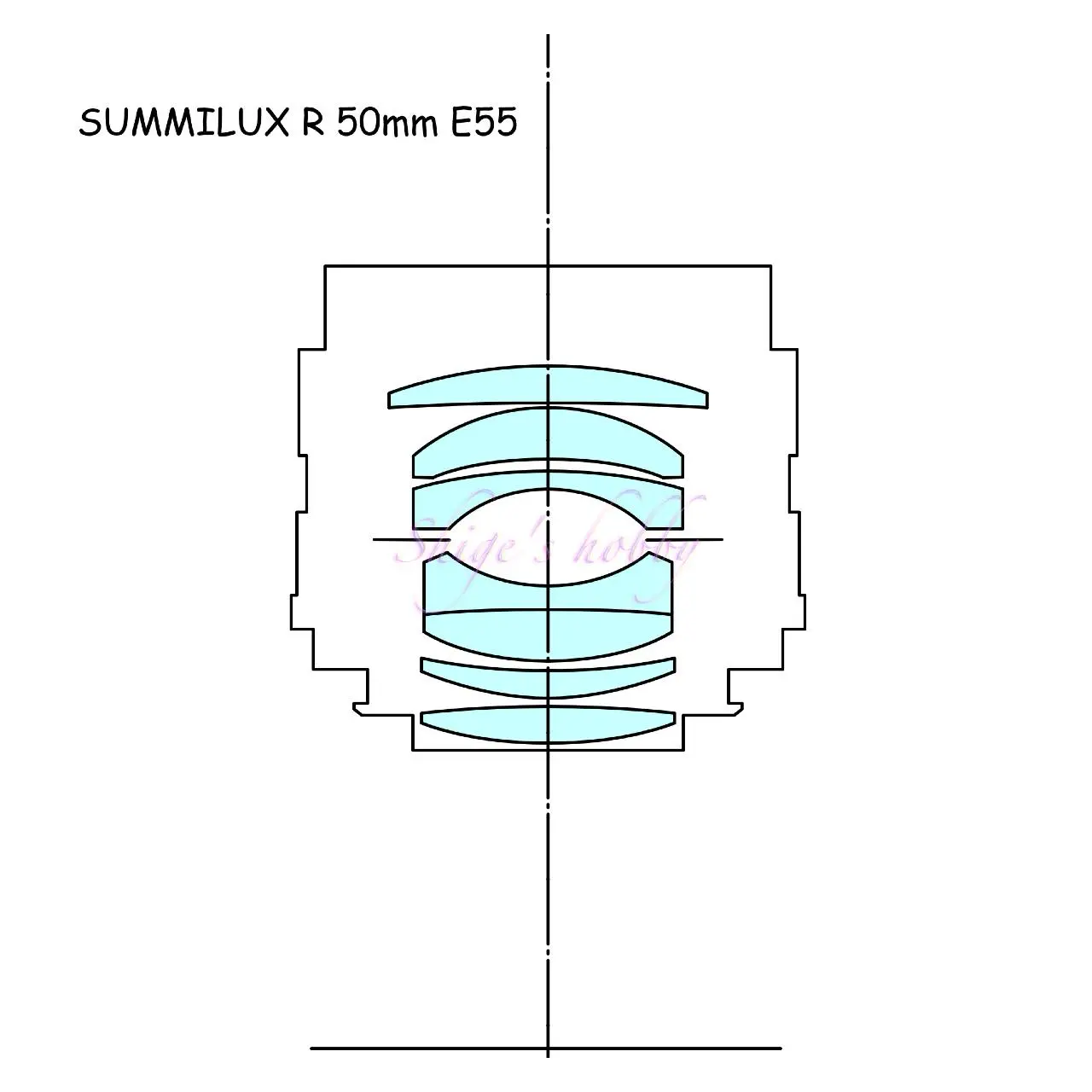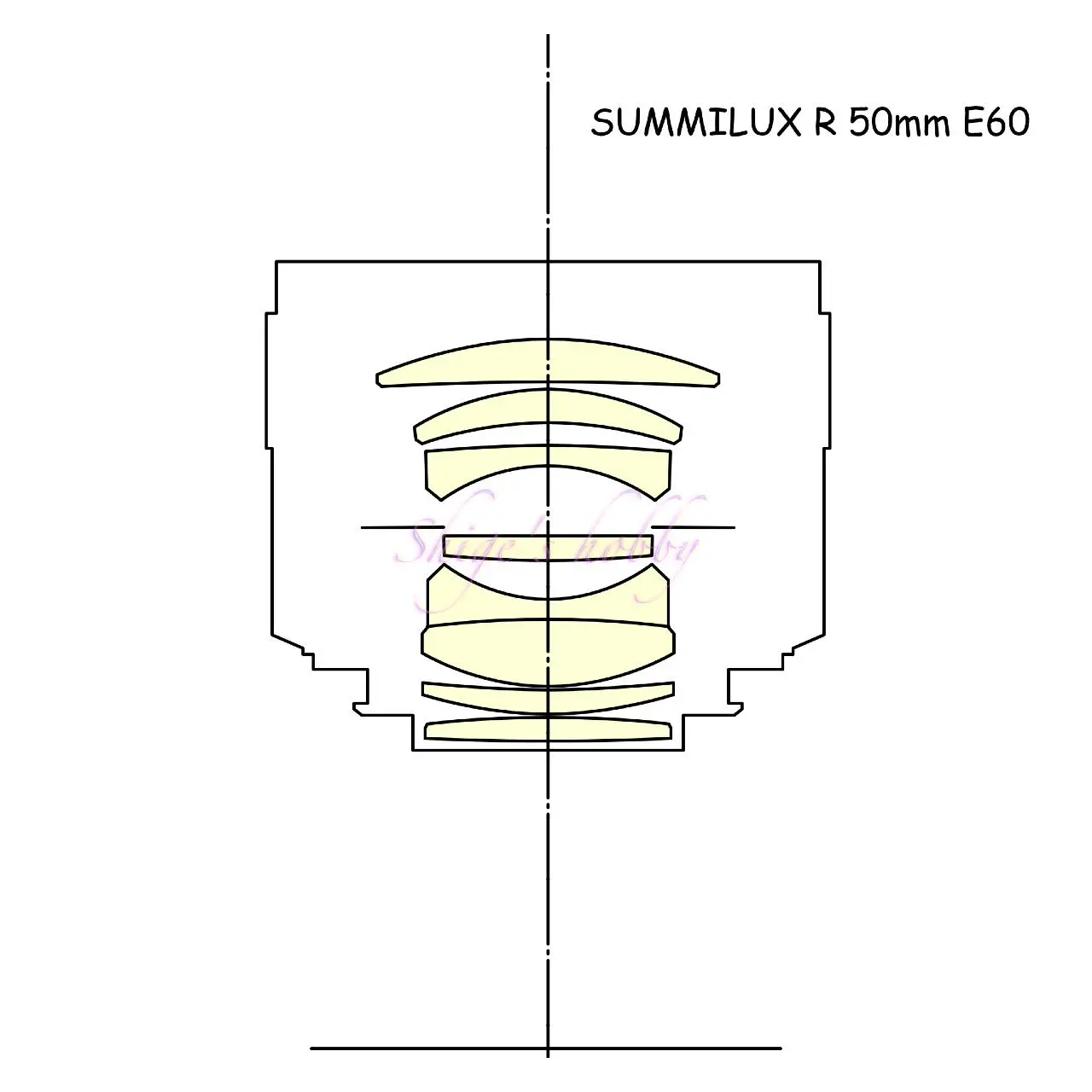SUMMILUX R 50mm E55 (old / late)

A review and photo examples of the LEICA SUMMILUX R 50mm F1.4 (old model/later model = Typ2), which has a revised lens barrel design and a built-in lens hood, used with the LEICA R8 and LEICA SL Typ601.
Table of contents
Gallery
- The example photos were taken with a LEICA SL ttyp601, a LEICA R8 + Lomography Lady Grey B&W 400.
Review
1.Overview
The SUMMILUX R 50mm old model, late model = Typ2 (hereafter referred to as “late model”) is a 3-CAM lens (order number: 11776) renewed in 1978, and the lens with R-CAM ROM introduced here was released after 1989 (order number: 11777).
The lens configuration is the same as the old model, early model = Typ1 (order number: 11875) (order number: 11876, Safari color) (hereafter referred to as “early model”), which was first released in 1970.
When combining the early and late models, they are referred to as the “old model”.
The new model, SUMMILUX R 50mm (order number: 11344), has a completely new lens configuration and a filter size of 60mm.
The old model has a conventional double Gauss type lens configuration of 6 groups and 7 elements.
Leica lenses have subtle design differences depending on the year of production, but the distinction between these older models is that those with separate hoods are called early models and those with built-in hoods are called later models.
The older models have the same lens structure, but the lens coating is thought to differ depending on the year of production.
The later model introduced here uses a standard 55mm screw-in filter size.
The early models have a screwless drop-in filter called Series 7 that is dropped into the inside of the hood and the filter is sandwiched between the lens front frame and the hood.
The early models were manufactured in 1, 2, and 3-CAM, and the only lenses with ROM terminals were modified ones. The later models were released in 3-CAM, R-CAM, and R-CAM+ROM terminal.
The early models are available in black and safari, while the later models are available in black, safari, platinum, and gold (order number: 11888).
2.Usage
The older and later SUMMILUX R 50mm models are well suited to film cameras due to their manufacturing date.
Therefore, when used with a digital camera at full aperture, the sharpness and resolution of the image may feel inferior compared to modern lenses, but this can be improved by narrowing the aperture. However, the image is not as sharp wide open as modern lenses.
It is necessary to recognize that this is a lens that produces such images when shooting.
It is not very resistant to backlight, and the built-in hood is short even when extended, so it cannot effectively block harmful rays.
Despite the aforementioned drawbacks, it is one of my favorite lenses, just like the Summilux R 50mm on the E60.
Compared to the Summicron R 50mm, the lens weight has increased by 100g due to the increased number of lens elements, and it feels comfortable when held in the hand. It has a good quality that cannot be experienced with recent plastic lenses.
Some R-mount lenses can cause lens errors on EOS equipped with a 35mm full-frame sensor. However, this lens could be used without any problems with the EOS-1 Ds MKIII.
3.Summary
In conclusion, to sum up the SUMMILUX R-E55, while its size is almost the same as the SUMMICRON R 50mm, it can be used in a wider range of situations because it can use a one-stop brighter aperture.
Even at full aperture, it does not produce an overly fluffy image, so if your shutter speed allows, you can use it at full aperture even during the day and enjoy soft bokeh.
The older model is produced in larger numbers than the newer model, making it easier to obtain. It was manufactured over a long period of 17 years, so the condition of the lenses varies greatly from lens to lens. When purchasing, it is important to check the condition of the lens and find a lens that offers a good balance between price and quality.
Specification
The Summilux from this era had a beautiful amber lens coating, and the final aspheric lens of the M-mount Summilux 50mm released in 1992 also had a similar coating color. However, the coating is not perfect, and purple fringes can be noticeable around the subject in backlit situations.


| Item | SUMMILUX | SUMMILUX |
| focal length(mm) | 50 | 50 |
| Maximum aperture | 1.4 | 1.4 |
| Minimum aperture | 16 | 16 |
| Lens configuration | 6 | 8 |
| Leaf blade | 6群7枚 | 7群8枚 |
| Minimum distance(m) | 0.5 | 0.5 |
| Lens length(mm) | 50.6 | 51 |
| Lens max diameter(mm) | 68.5 | 70 |
| Filter type | 55 | 60 |
| Weight(g) | 395 | 490 |
| Hood | Cylindrical pinning | Build in |
| Lens mount | LEICA R | LEICA R |
| Release date | 1989~1995 (Model 11777) | 1997~2005 |
| Production numbers | 4,149 (11777) 35,322 (all) | 2,700 |
Reference links
- All about the R-type Leica / Author: Shinichi Nakamura / Edited by Asahi Sonorama Ads by Amazon
- SUMMILUX-R 50mm F1.4 E55・LEICA WIKI
- SUMMILUX R 50mm f/1.4 E60・LEICA WIKI
- SUMMICRON-R 50mm F2・LEICA WIKI
- SUMMILUX M 1.4/50-3rd・LEICA WIKI
- SUMMILUX R 50mm E55・LENS.DB
- SUMMILUX R 50 2nd Technical PDF
- LEICA SL Typ601・Shige’s hobby
- LEICA R8・Shige’s hobby
- SONY α7Sii・Shige’s hobby
- LEICA CL・Shige’s hobby
Update history
- 2025.5.4
- 2024.12.16
- 2024.02.16:Update article
- 2022.02.07:First draft
Affiliate link
- Leica Lens・Ads by Amazon
- Leica Books・Ads by Amazon
- LEICA R used lens・Ads by Rakuten

Leave a Reply